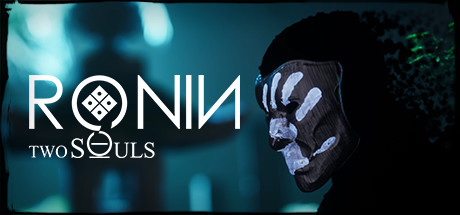RONIN: Two Souls – A tale of 4 hours and three chops (so far).
Released: Steam Early Access
Type: Single-player
Genre: RPG, Adventure,
Action, Atmospheric
Developer: M11 Studio
Publisher: M11 Studio
Release date: Feb 18, 2021
At a Glance
When I first laid eyes upon the announcement trailer for ‘Ronin: Two Souls’ I was immediately sold. Finally a new entry in the (somewhat) open world – choices matter – samurai RPG genre of games. A new game by a fresh indie game developer who – like me – probably has a lot of love for the Way of the Samurai series, or at the very least its concepts.
As expected for this genre we get to play as a young warrior who can choose to either help, ignore or insult those around him. Depending on the choices that are made the player will need to complete various quests, fight enemies and gradually gain a better understanding of what is going on in the game’s open-ish world. To keep things interesting, players can alter their appearance and upgrade their stats by finding hidden stashes strewn about the landscape as well as claiming the gear of fallen foes. Rinse and repeat until all items are found and all the endings are discovered.
While all that might sound a little bland and simplified – it can be most engaging if done well. The sheer number of weapons, fighting styles and story lines available in other entries in the genre had me playing and re-playing for years and years. There’s something peaceful about this kind of game (once a certain level has been reached in terms of skills and gear).
Sadly that does not apply to Ronin: Two Souls.
The number and scope of quests are limited, the number of dialogue options more so and most importantly: the combat system may very well be the worst I have ever encountered since playing “Pit Fighter” on the Super Nintendo in the early 90’s.
In its current form the game is simply not worth playing – yet it has been deemed ready for early access by the developer. That usually means no fundamental changes will be made to the core mechanics. Indeed – most announcements pertain to bug fixes and the creation of additional content… meaning the combat system is likely deemed ‘ready’.
That’s not to say the game doesn’t have its merits, but certainly not enough to match the asking price. While the graphics are definitely not bad for an indie – pretty much everything else would need a complete overhaul for the game to be worth playing, let alone worth paying for.
The Good
- Pleasant atmosphere (scenery)
- Good-ish graphics for an indie game (scenery)
The Meh / Not-so-Good
- Extremely short (about 4 hours)
- One dimensional combat system
- Terrible control scheme (environment)
- Poor character design (graphics, story, dialogue)
- Only one spoken language: Turkish
- Terrible dialogue (story, spelling, grammar)
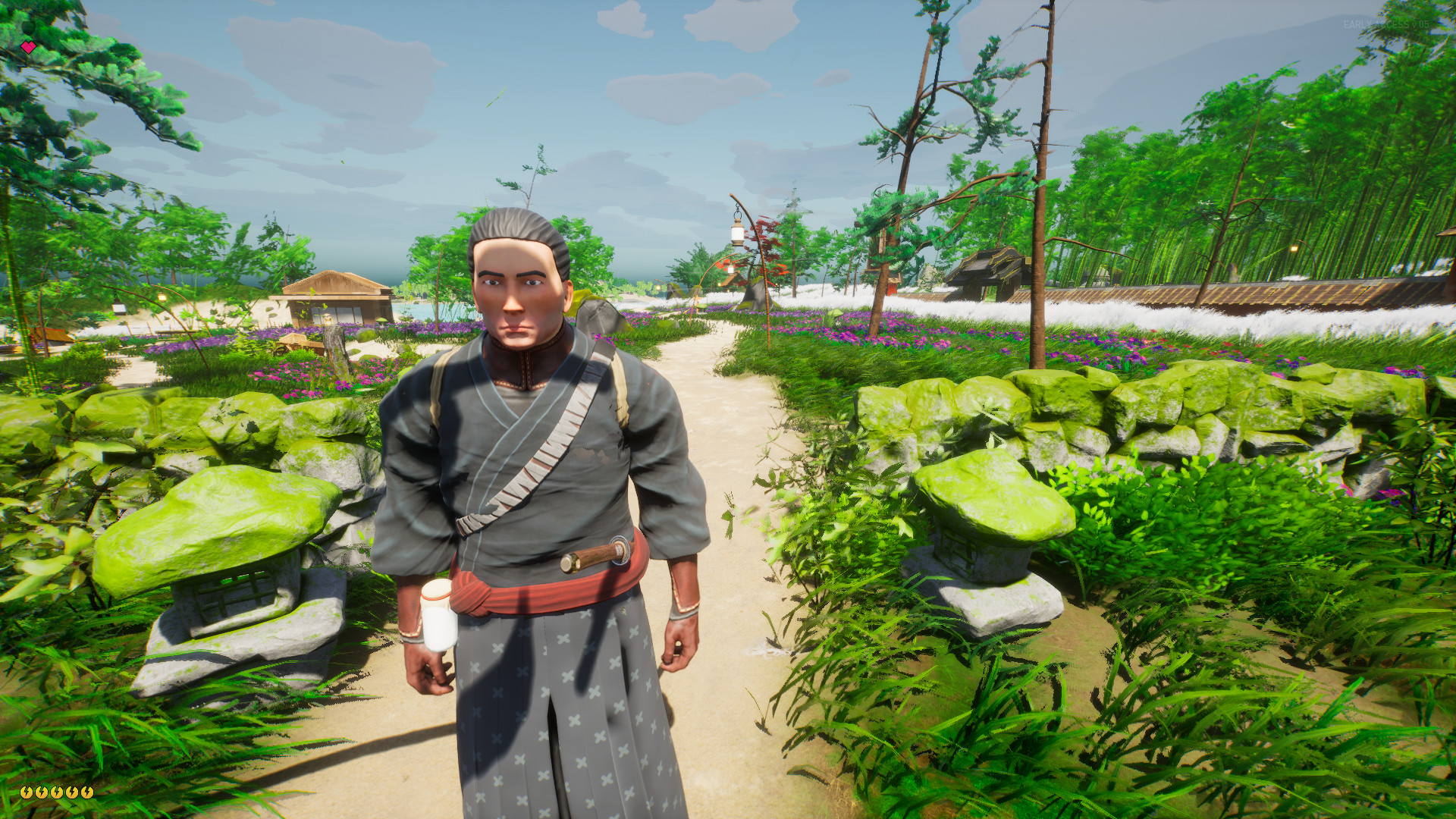
Analysis / In-Depth Review
Gameplay
As described in the opening of this review – the game is a 3rd person action adventure RPG offset by various battle – or duel – scenes. Players can talk to various NPC’s in order to accept various quests – or choose to insult or ignore them instead.
Quests generally centre around finding people or objects, while a few quests here and there require a smidgen of slicing and dicing.
The aforementioned battle scenes are for lack of a better word – ghastly. Combat consists of one-on-one encounters (in succession) that are fought out using 3 possible stances – each with one attack and one block. The stances are mainly aesthetic however – they vary in stamina and attack strength, but ultimately have little influence on the outcome of a duel. One simply blocks the enemies attacks until their stamina has run out, after which a single counter attack can be made. There are no combo’s to be earned or found in this game. Repeat until the enemy is dead, while remaining mindful that failure to block a single attack will find the player pushing up the daisies (or bamboo in this case). After the first enemy has been downed, 2 to 5 will follow successively – which need to be dealt with in exactly the same way. Fail to block: restart battle.
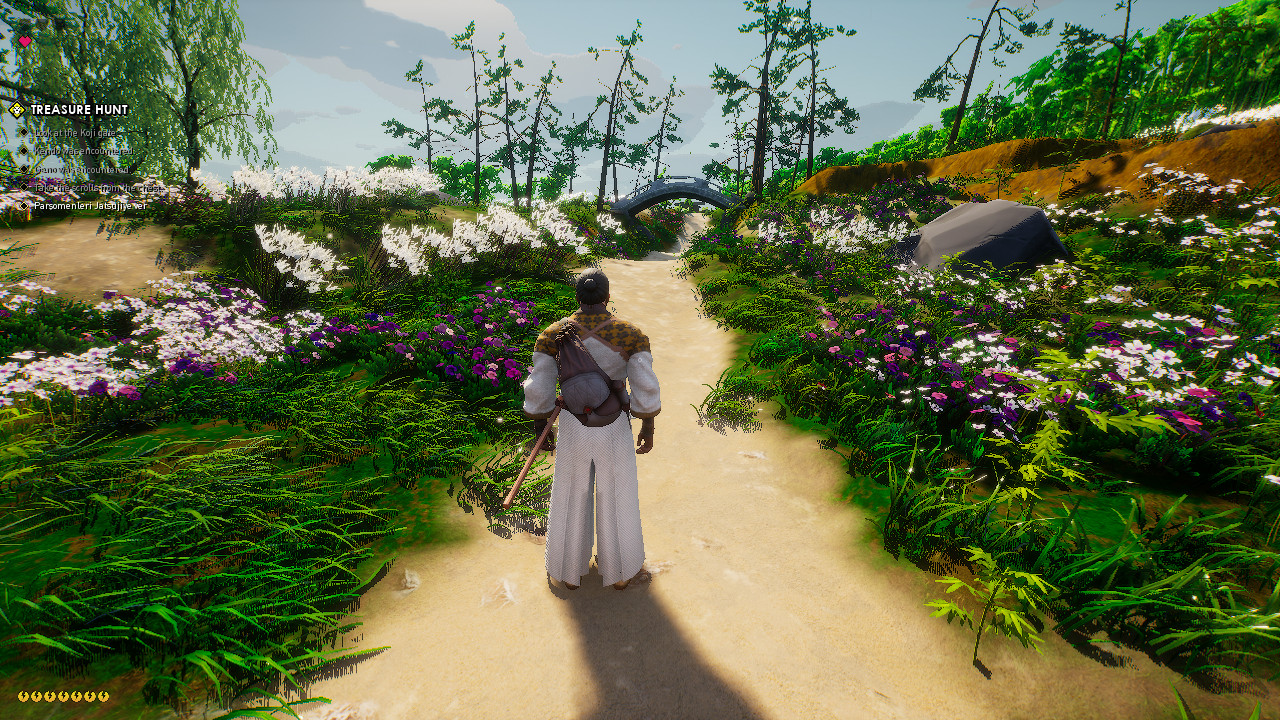
Narrative
Players take the mantle of Kenji (meaning sacred sword or sacred jewel) – a young warrior who has recently lost his master (to natural causes). Originally a foundling – Kenji has no knowledge of his heritage or background. His master found him as a baby and trained him to become a warrior, which is what he sets his sights on now that his master has passed away.
As the game starts we find Kenji in his (masters) home in Toshi village on a small (nameless) island. Before we can work out the controls, Kenji is approached by a fellow villager asking for his help – and so the story begins.
(And so the narrative ends as there isn’t really one to speak of until certain key quests have been completed).
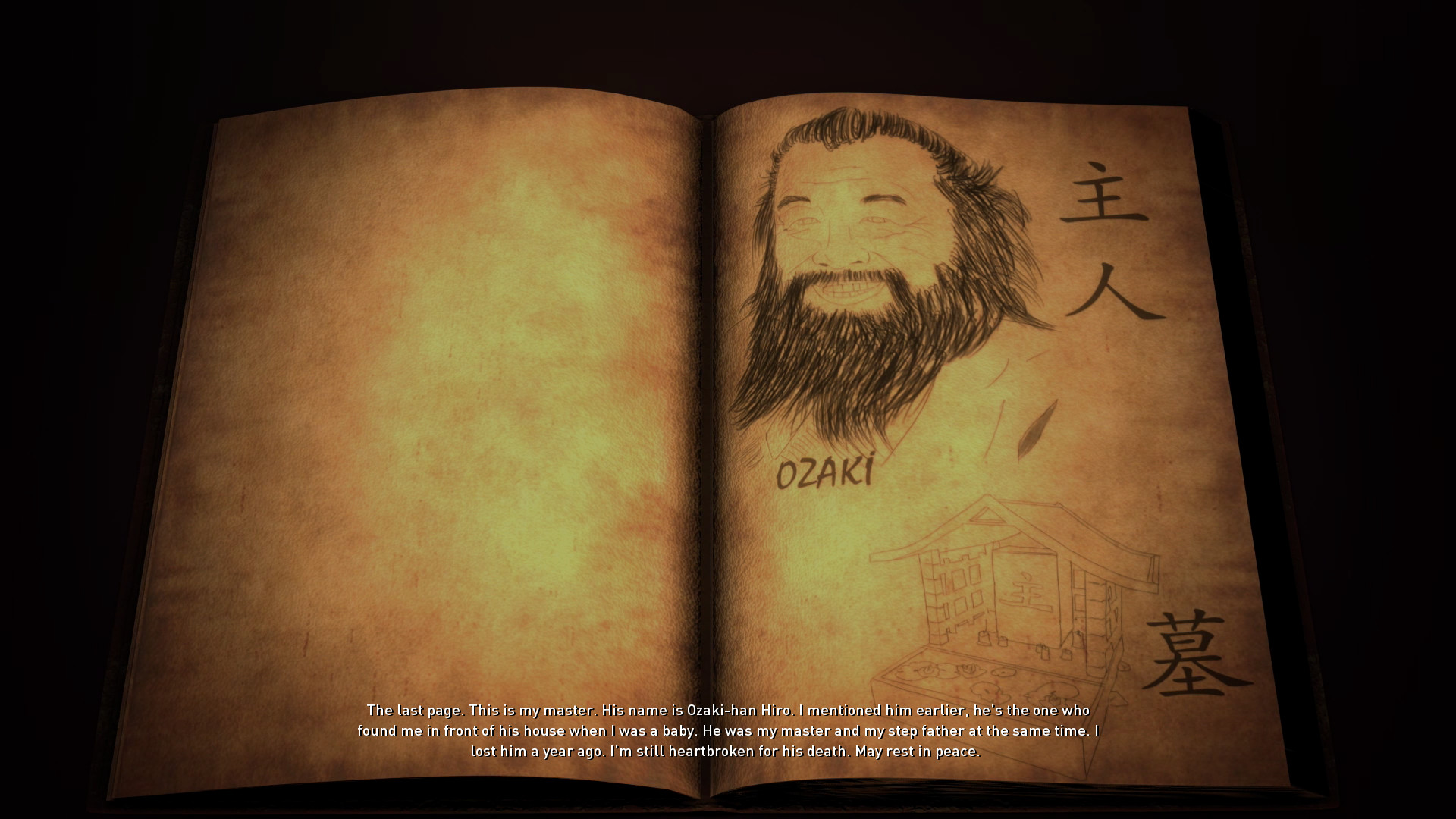
Atmosphere
The game’s atmosphere is really its main attraction in my opinion. Set in an idyllic peaceful environment with beautiful scenery and a spiritual atmosphere, there is some enjoyable peace to be had. Running through the bamboo forest, past shrines and picturesque structures makes it easy to see how one would devote oneself to the protection of such (potential) beauty.
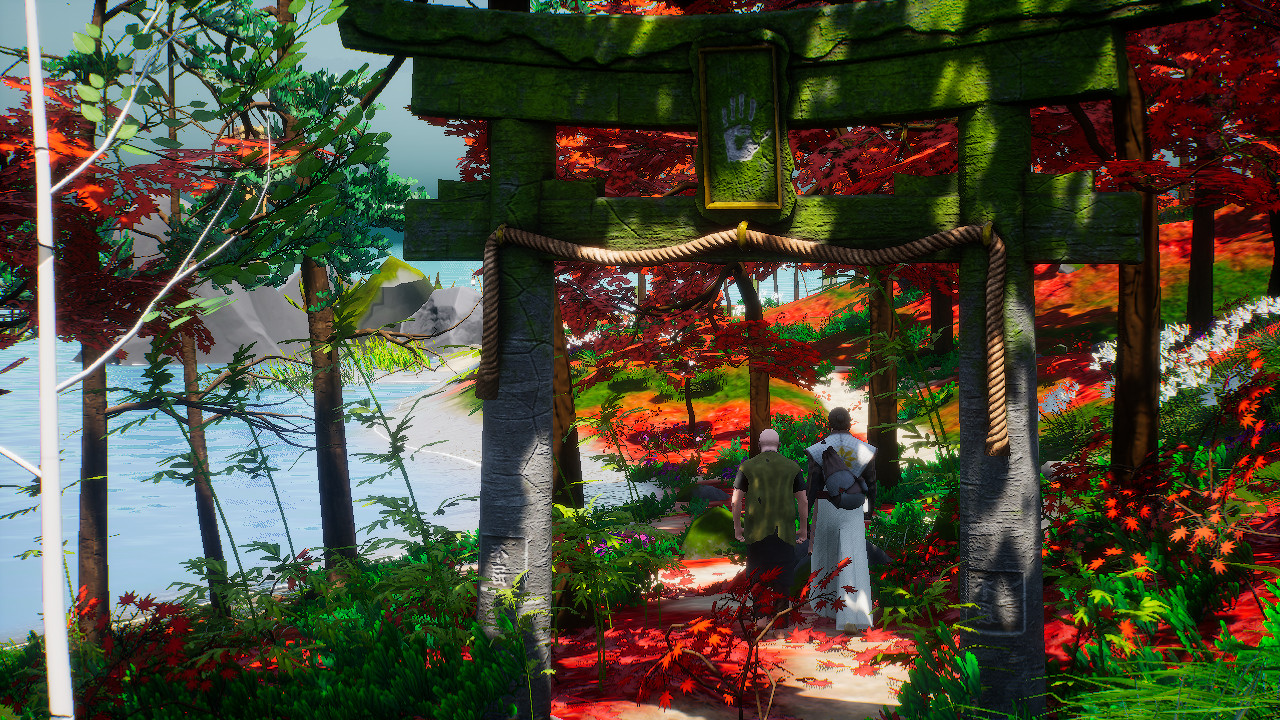
Mechanics
The game functions as one would expect from a 3rd person action adventure game; run around, open boxes, pick up items and engage in conversations that may or may not end in battle. Said battles require 2 buttons… one to block, one to strike. No direction buttons required except to choose one of the 3 combat stances. Moving backwards and forwards is possible, but not necessary.
Needless to say the game is mechanically overly simplistic. Kenji can run and jump – but he can’t climb. Meaning it’s easy to get stuck and hurt for no identifiable reason whatsoever. Picking up items is easy enough if said items are located in a box or lying (singularly) on the ground – but if a couple of items are strewn about in the same place, then good luck.
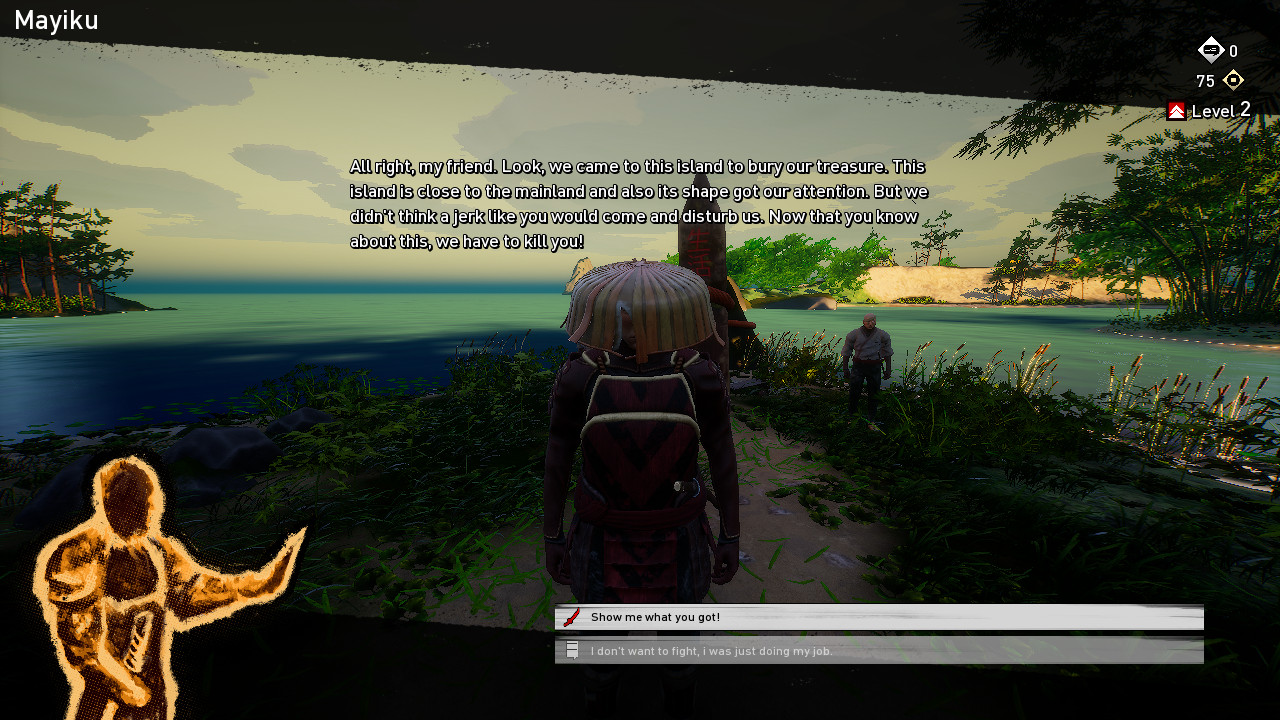
Controls are awkward and entirely without UI-aware scripting – as an extra push of a button will quickly lead to dropping items or making undesirable dialogue choices.
To be fair it is an early access game and these issues will no doubt be fixed, but the combat system is likely here to stay.
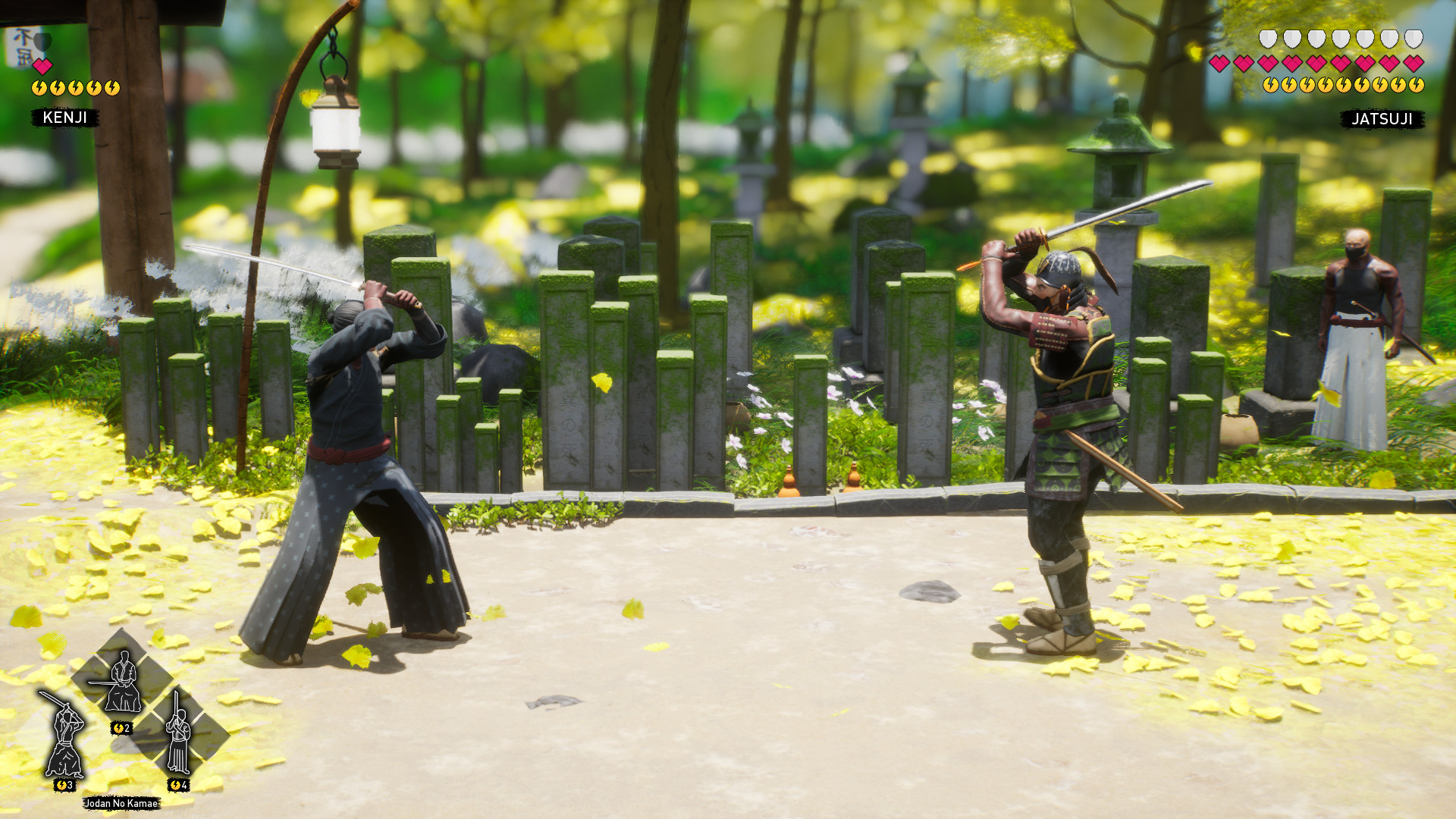
Presentation
Graphics
While the game’s environments aren’t bad at all, facial designs and animation are terrible – early 2000′ style. Thanks to Unreal Engine 4 the game’s lighting and physics are pretty decent for an indie – but even Unreal engine couldn’t fix those faces.
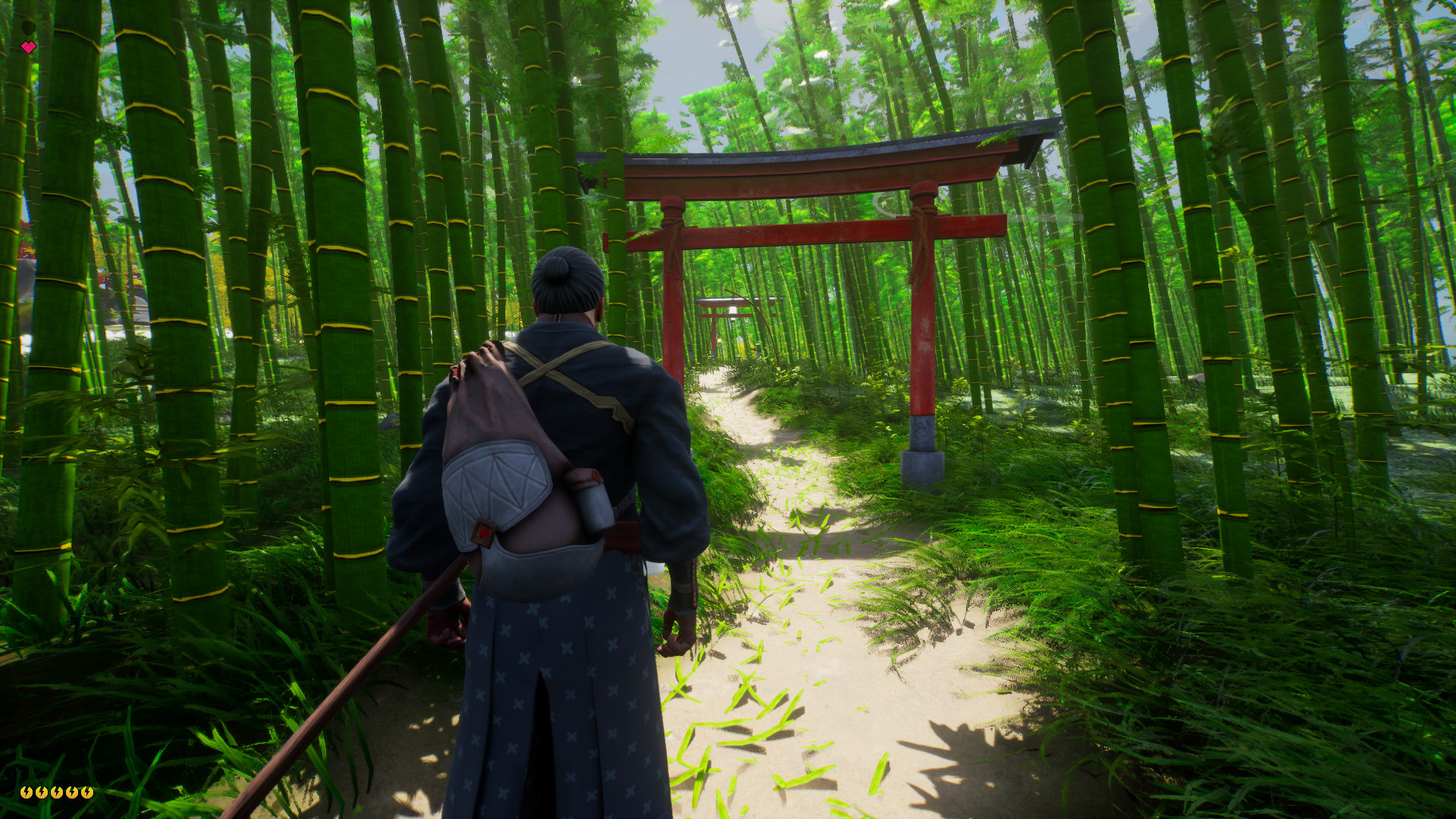
Audio
Peaceful, minimal and simplistic – which in this kind of game isn’t necessarily a bad thing. Nothing to write home about, but not bad. The major disappointment was to discover that the games spoken language is Turkish – not Japanese.
Technical
Performance
Given the static nature of both the PC and NPC’s in the game – it is surprisingly demanding. This is no doubt due to lack of optimisation in lighting, motion blur and other dynamic elements in the environment. It runs okay on a Ryzen 5 with integrated graphics at 720p. Anything higher should do nicely. I expect that the developers still have some optimising to do here and there to make things run more smoothly.
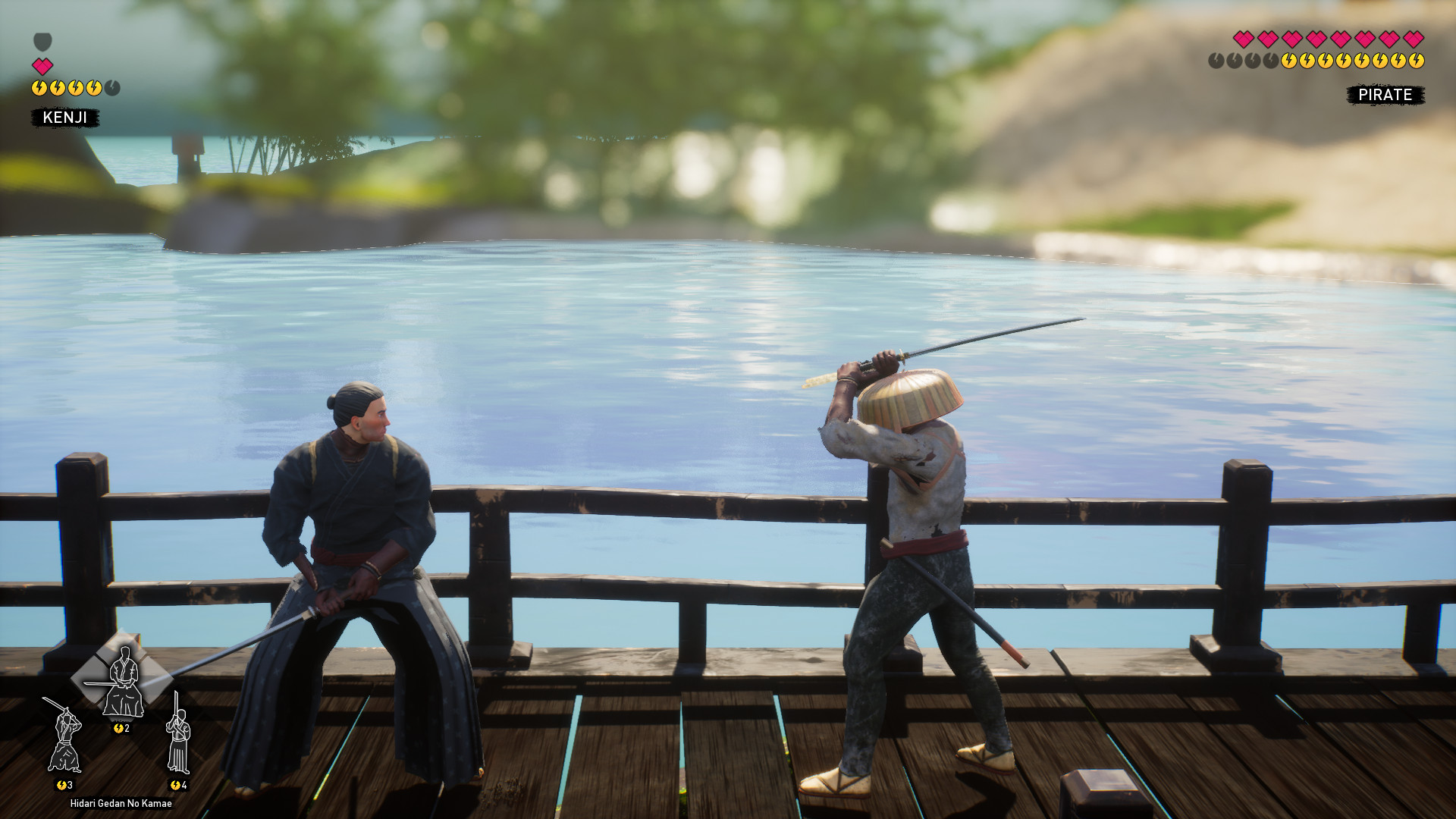
Bugs / Glitches
Language glitches, inescapable areas, items that can’t be picked up – plenty of bugs. But it’s fair to expect that from an early access game.
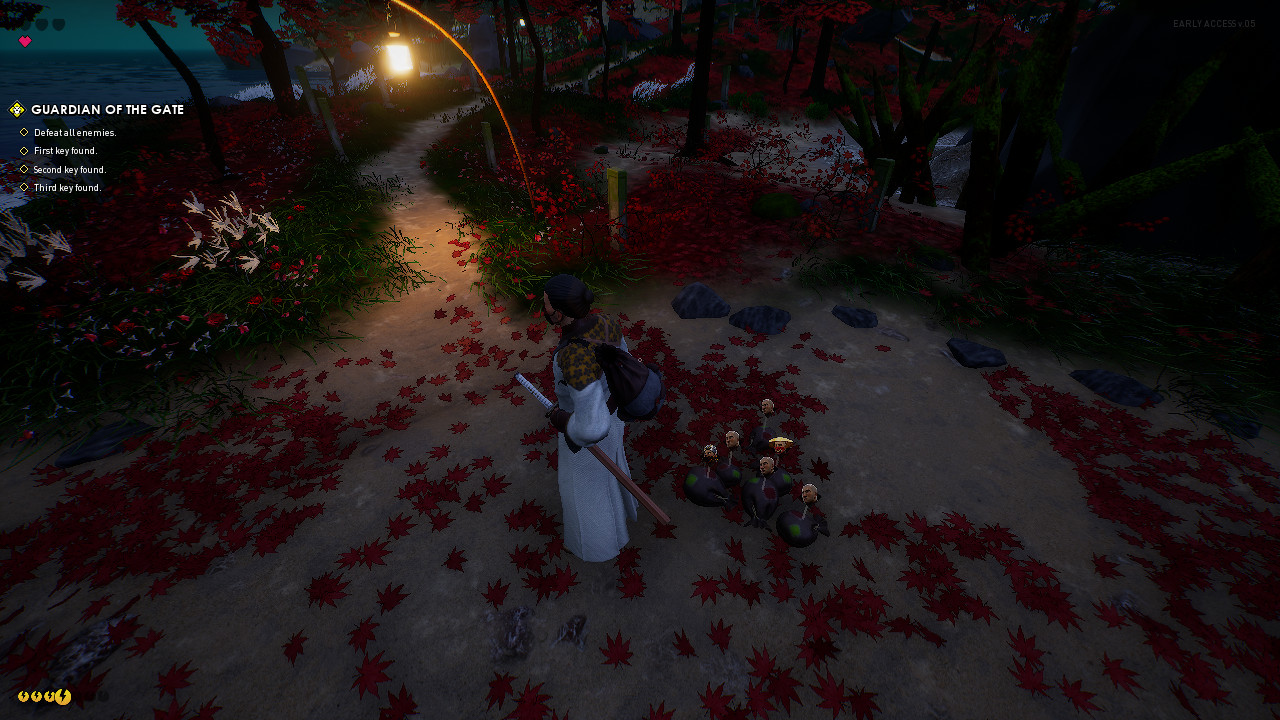
Conclusion
Value for Money
As the game has already been released (albeit as an early access game) – the primary focus of the developers will likely be on polishing gameplay mechanics, adding content and (hopefully) additional language support.
As it stands, it’s a 4-ish hour game that is riddled with both mechanical and language related bugs, a dodgy control scheme, a flat and inane story that is barely worth exploring and a combat system that is an insult to the genre.
While it is a valiant effort for such a small team to have made the game as polished as they have – it’s not worth $15, not by any stretch of the imagination. Even if they were to add a few more (4 hour) chapters.
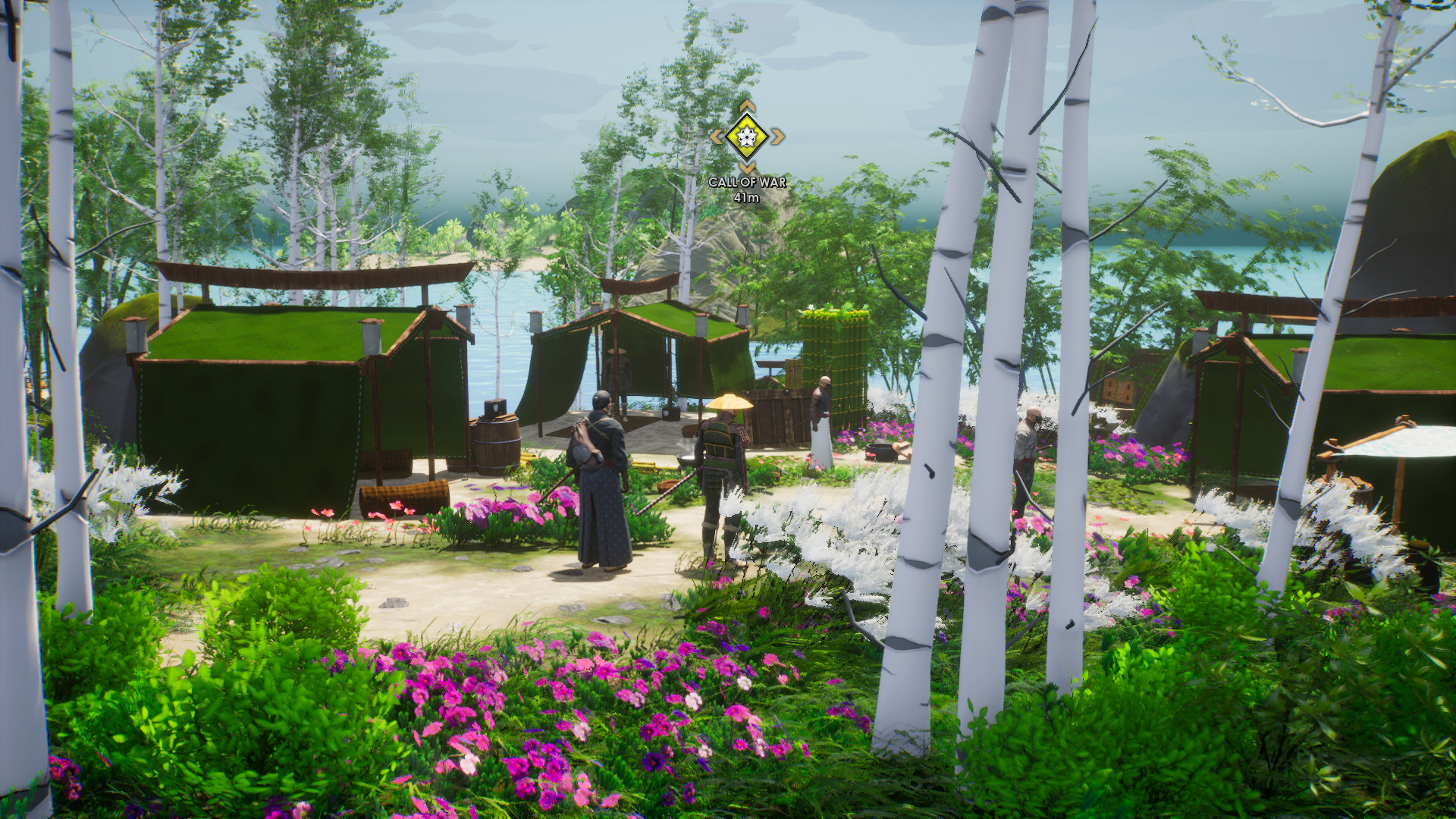
Verdict
Unless a miracle happens – not recommended.
Quit.

